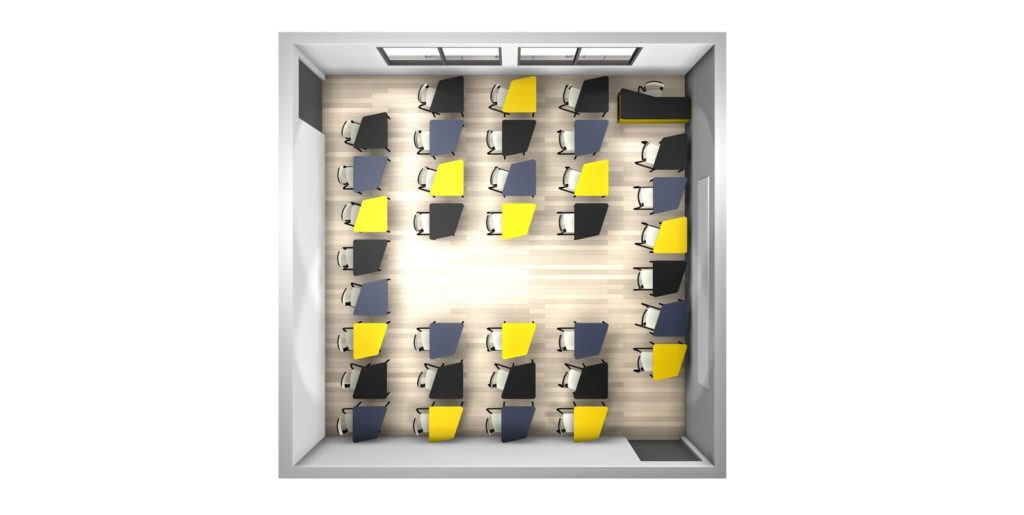The French NF Education standard has long since imposed health and safety requirements for furniture used in the school environment. But today, school furniture is increasingly required to meet mobility and flexibility criteria, thus challenging the traditional idea of a “classroom“. Given the emergence of new teaching methods and the ageing of the school furniture stock, modular furniture is the perfect match for the new concept of what a learning centre should be.
Towards a more ergonomic teaching environment
Flexible and open structures such as modular furniture allow a space to be reconfigured for different types of use. This is at the very heart of the concept of ergonomics, allowing a school to broaden the range of activities it can roll out.
>Rethinking the layout of a learning environment will clearly bring about a change in practices. Today’s pupils don’t learn in the same way, they are used to social interactions, participation and an experimental approach.
Towards a collaborative learning environment

The modern learning environment is now using new and more appropriate resources that embrace a global vision of teaching. That is why the concepts of modularity and flexibility within the school environment are now central to the thinking of school administrators.
In order to equip learning environments with modular furniture, different criteria such as guarantee, ease of maintenance, standards or the size of furniture must be taken into account. The objective is to provide a collaborative workspace for learners, regardless of their age.
Towards new learning experiences
Each of the elements that make up a piece of modular furniture mobilieris able to modify the way students experience their learning.
>
On the one hand, the learner can make a distinction between individual work and the outcomes and skills gleaned from groupwork. On the other hand, faced with a new generation of pupils who are far too introverted, the teaching staff feel a need to inject dynamism into an appropriate learning environment.
The many varieties of modular furniture encourage not only an open-mind but also the holistic development of pupils.
Towards an optimisation of the “classroom environment”
The way in which the learning centres are equipped and laid out can have a significant impact on the availability of the space. Classically designed furniture, which is not easy to move around and often passive, no longer adapts to an active learning environment. There are many options to optimise this surface thanks to modular furniture with a well-thought-out design. The proposed furniture models are the result of many years of research and collaboration with education and learning professionals in schools.
>Modular furniture is a way of expanding the learning space “from the inside” in schools. This is one of the best ways to eliminate bulky storage and integrate new types of furniture thanks to the space-saving design. What’s more, whether the pupils are facing to the back, front or to the sides, group dynamics are always present.
Discover the Programme 3.4.5

>
